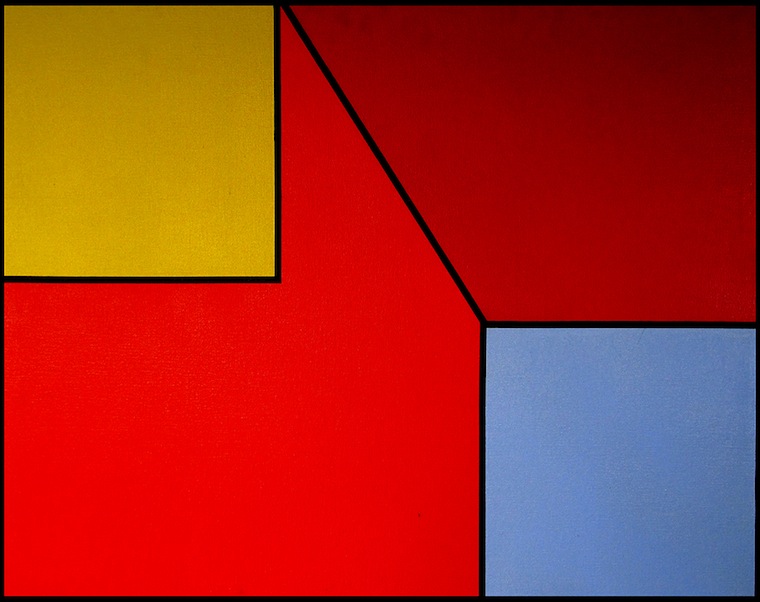MOVEMENT.
Diane Kirkpatrick, professor of art at the University of Michigan in 1973, writes the following about Rubello's early '70s geometric paintings, including Color Cubes:
The back plane never reads as infinite space, but rather as a visual limit in front of which, and against which, the volumes act. The volumes also interact with each other; the relationships are never those of stasis, but rather those of implied movement as if Rubello in each piece had caught one moment in a fluid geometric dance....We are never permitted to settle comfortably, even for an instant, into one reading of the forms in space....The work of David Rubello introduces us to a magic world of shapes and space which becomes animated as we look at it.18

The kinetic power of Color Cubes and its cousins is a purely visual phenomenon, brought about by the communion of an active eye with a composition carefully designed to move it.
Later in his career, after he begins to explore the possibilities of dimensional painting, Rubello's art becomes more literally kinetic. His "movables" are three-dimensional paintings and sculptures made of wood that incorporate one or more movable parts, allowing for variable configurations.
"You can change this," Rubello explains as he demonstrates one. "It's a different painting each time. You can decide what you want to look at each day."
Below is a video excerpt showing some of Rubello's movable paintings in action:
See COLOR CUBES , INTERACTION , and PERCEPTION .